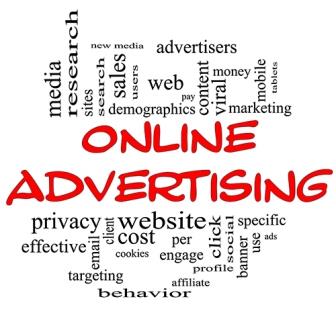In our last article, we discussed how technology and social media have changed the way we communicate and how we market our businesses.
As technology evolves, the way we communicate also evolves, and social media is a prime example of this.
It appears that social media continues to be a popular choice for businesses, as it has proven itself to be a highly effective way to reach prospects. So now, more than ever, it’s important to position your business through at least one social media platform.
A recent study showed that as of January 2016, over 70% of folks in the United States had at least one social media profile. And it’s predicted that by 2018, the number of worldwide users will increase from 2.1 billion users to 2.5. Currently, Facebook claims over 1 ½ billion active monthly users, with YouTube posting and even 1 billion, an Instagram claiming 400 million.
Clearly, with the number of people on the various social media platforms, it only makes sense for you to ensure that your business is connected to at least one of these platforms.
Which raises the question – what platform, or platforms should you be on?
It doesn’t make sense, from a time or budget perspective, to choose too many platforms or to choose them randomly.
What is it that your company does? The social media platforms that your company should be on depends on your niche, as well as your target audience. Are you B2B, or B2C? Does your product or service lend itself to images? If so, an application such as Pinterest, Instagram, or Facebook would be a good choice or your business. On the other hand, if you specialize in a specific product or service selling to other companies, an application like LinkedIn would make more sense.
One of the advantages of using social media to reach your target audience is that it is relatively inexpensive. There are a number of free tools out there, such as HootSuite, that can help you schedule updates and posts to your social media platforms, allowing you to create content for posting ahead of time. Of course, these applications also have premium versions at a cost, depending on your requirements. There are also several companies that will manage and monitor your social media on your behalf, but unless social is a big part of your final, you should be able to manage this yourself, at least in the early days.
One of the biggest issues with social media is that, although it has become more and more integrated into our lives, it is still very difficult for businesses to measure their return on investment, or ROI.
My response to this issue is that you have to be clear with social media marketing, just like every other type of marketing, what exactly it is that you are looking to measure. What is your goal? Is your intent to use these social media platforms to drive website traffic, develop broader exposure for your business, or are you looking to make sales through the platform?
Social platforms are equipped to provide you with analytics. You can find out how many people have been exposed to your posts, how they are responding to them, as well as how many people are clicking on your website links. By taking a look at the analytics, you can find out what is the best time of day to post to reach your target audience, as well as which platforms are performing the best for you.
Be sure that if you take the time to develop social media profiles for your business that you do not waste that effort by ignoring those channels. Create a calendar, or at least make a commitment to post on a regular basis. Whether it is once a week or twice a day, be sure that you commit to this schedule and maintain it. Your followers and prospects will begin to anticipate your posts, and your audience will grow.
Also, remember that social media is about being social, not just about your own products and services. Be sure to interact with the people you are attracting to your platforms, and include posts that will be of interest to your followers, even if they are unrelated to your business.
Creating your social media profiles may be free, but remember that, just like everything else, there is still a cost attached. In order to be effective, you’ll have to invest some time and perhaps a bit of money into it to make sure that you are not wasting your efforts.
Until next time…
Are you ready to grow your business now? If you’re ready to take the next step and make your business more profitable, contact us today.
If you like the information you are receiving, please consider forwarding this post.











